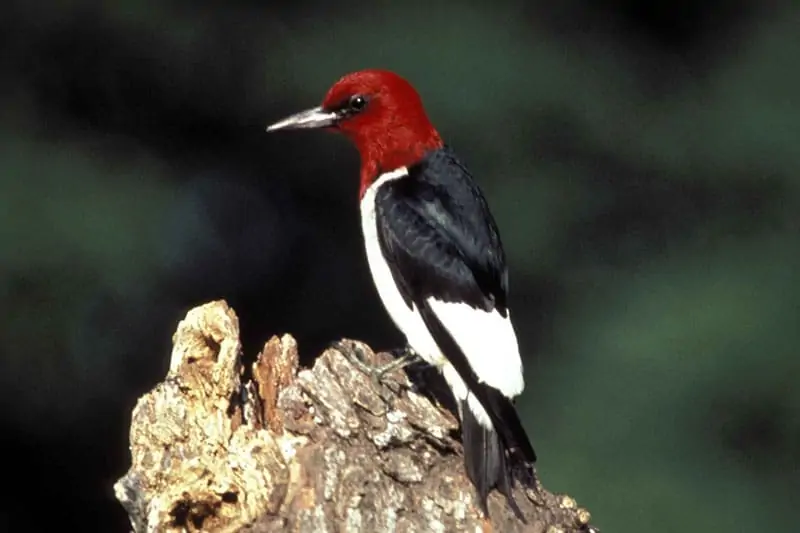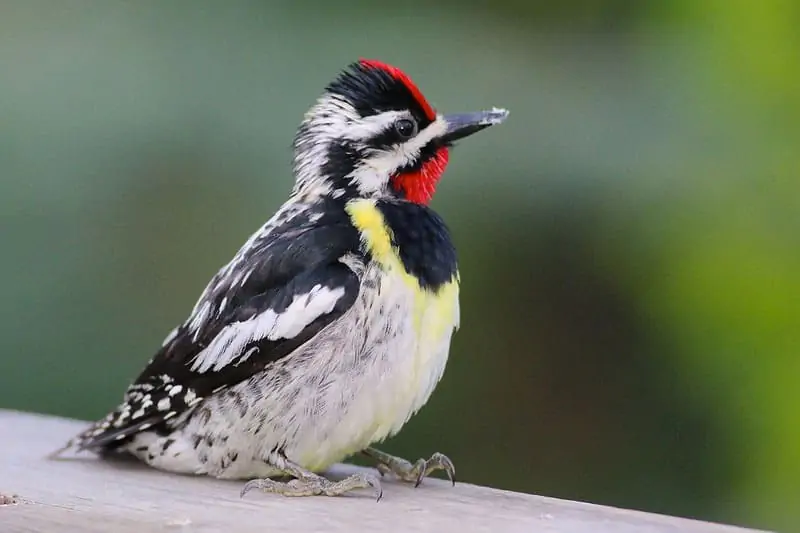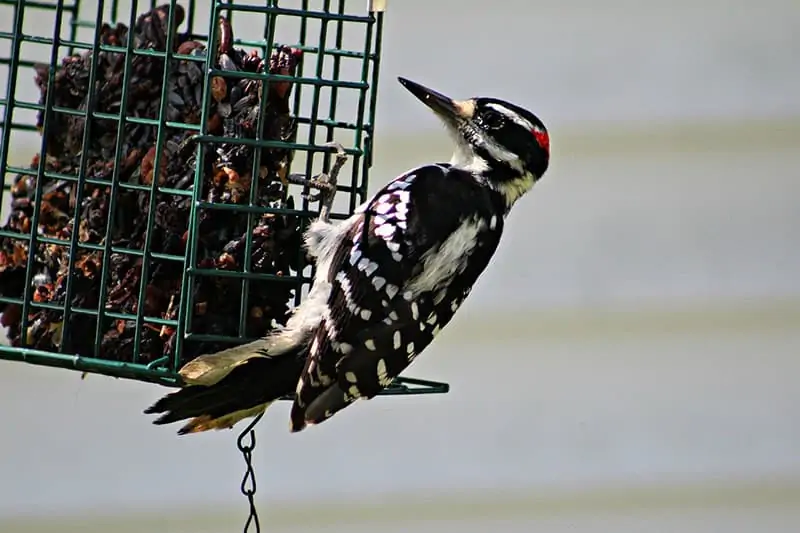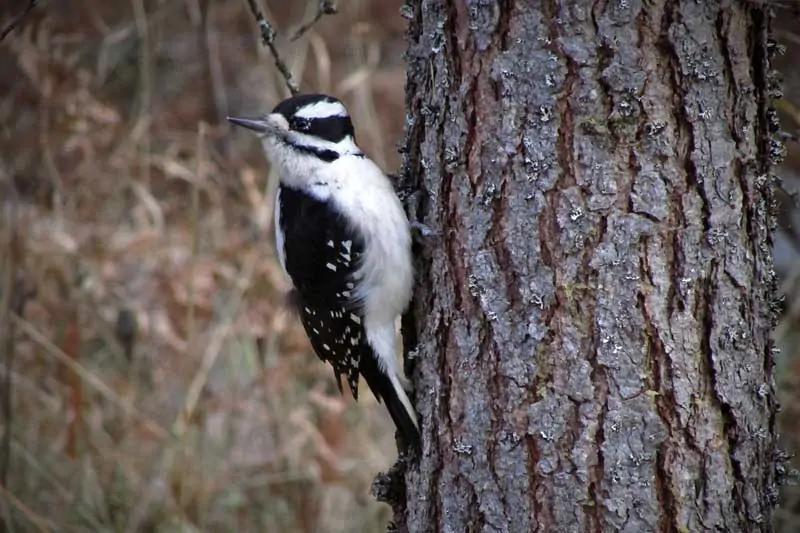Because of its rich natural resources, clean streams, and nearly 600,000 acres of natural lakes, Arkansas is dubbed “The Natural State.” Being central in the United States Because of its mild climate, the state is able to support a wide range of animals. Many distinct species of birds may be found in Arkansas, however we’ll focus on just seven of them here: the Arkansas woodpeckers.
I’ll go over each species and tell you where and when you can see it in Arkansas. We’ll also discuss a few interesting facts about woodpeckers, as well as providing you with images of each species.
THE 7 SPECIES OF WOODPECKERS IN ARKANSAS
In Arkansas, there are seven different woodpecker species. Red-bellied Woodpecker, Red-headed Woodpecker, Downy Woodpecker, Yellow-bellied Sapsucker, Hairy Woodpecker, Northern Flicker, and Pileated Woodpecker are some of the species found here.
1. RED-BELLIED WOODPECKER

Length: 9.4 in
Weight: 2.0-3.2 oz
Wingspan: 13.0 -16.5 in
The caps and napes of red-bellied woodpeckers are peach-red, while the backs are striped black and white. Woodpeckers spend the year in Arkansas’ forests, perched on major branches and trunks of trees, and may be found across the state.
They’re also well-known for venturing out into the woods and visiting backyard bird feeders. To attract them, use suet blocks throughout the winter, peanuts, and occasionally sunflower seeds. The insects inside dead trees are also appealing to them.
Learning the loud, rolling call of one of these birds is one of the best ways to find them. In the spring and summer, they’re very active callers, so pay attention.
2. RED-HEADED WOODPECKER

Length: 7.5-9.1 in
Weight: 2.0-3.2 oz
Wingspan: 16.5 in
Throughout Arkansas, Red-headed Woodpeckers may be seen year round. Adults have black and white wings with bright red heads, which make them easy to spot. The plumage of juveniles is more drab, with white patches on their wings. The plumage of juveniles is almost all gray-brown.
Open woodlands with clear understory, pine savannas, and swamps are preferred habitats for these woodpeckers. Their population is declining due to the reduction of their habitats.
In comparison to other woodpeckers, they are unique. In addition to drilling into wood, red-headed woodpeckers hunt for insects in the air. They’ll also store extra calories in their tree crevices, such as nuts and seeds.
3. DOWNY WOODPECKER

The weight of woodpeckers is on the lower end. They’re between a sparrow and a robin in size. In comparison to other woodpeckers, their beaks look shorter.
In Arkansas, year-round, you may find Downy Woodpeckers in open woodlands and forests. They may be found in backyards, parks, and other residential areas, favoring deciduous trees. Throughout the spring and summer, they are quite active hammering into trees and generating their characteristic high-pitched calls.
They often join mixed-species flocks throughout the winter. For increased protection and improved chances of finding food, they may team up with other tiny birds.
4. YELLOW-BELLIED SAPSUCKER

Length: 7.1-8.7 in
Weight: 1.5-1.9 oz
Wingspan: 13.4-15.8 in
During the winter, Yellow-bellied Sapsuckers may be found in Arkansas before migrating north to their breeding habitat during the warmer months of the year. They may be found up to 6,500 feet in height in young deciduous woodlands. They spend their winters in the open woods.
On their foreheads and under their bills, they have bright red markings. The remainder of their plumage is black and white, with a whitish underbelly and sometimes yellowish undersides.
The rows of sap-wells found in trees are a good indicator of nearby Yellow-bellied Sapsuckers. These woodpeckers utilize these shallow, neatly arranged holes to drink the sap and other insects that leakage out.
5. HAIRY WOODPECKER

Length: 7.1-10.2 in
Weight: 1.4-3.4 oz
Wingspan: 13.0-16.1 in
In Arkansas, year-round hairy woodpeckers may be found, however it’s important to note the difference between them. Larger and with longer bills, hairy woodpeckers They have a square head, black and white feathers, and a huge white patch that stretches down their backsides.
In mature forests, they can frequently be found on trees’ trunks and main branches. They also stop by suet or sunflowers seed-filled feeders in the yard. Listen for their unique whinny, “peek” call, or for them drumming on drums while grazing.
6. NORTHERN FLICKER

Length: 11.0-12.2 in
Weight: 3.9-5.6 oz
Wingspan: 16.5-20.1 in
Several of the white and black-colored woodpeckers we’ve talked about are outliers in Northern Flickers. They have a silvery brown coloration and stark markings of red in the west and yellow in the west. They’re rather big. They have crescents and barring on the remainder of their plumage, and their undersides are dotted with dots.
Northern Flickers are also known for digging for beetles and ants on the ground, unlike other woodpeckers who prefer to fly. In Arkansas, they live in open forests and forest edges year-round. They’re often perched on branches while they’re not on the ground. Listen for their terrifying screams and loud roars.
7. PILEATED WOODPECKER

Length: 15.8-19.3 in
Weight: 8.8-12.3 oz
Wingspan: 26.0-29.5 in
The big, crow-sized birds with long beaks and red, triangular crests on their heads are Pileated Woodpeckers. Their heads and underbellies of their wings are striped with white, while their bodies are mostly black.
These woodpeckers can be found all year in Arkansas, but they aren’t as well-known as some of the other Arkansas woodpeckers on this list. Look for them in ancient woodlands with a lot of dead trees and debris. Also watch for excavations and distinctive rectangular holes in soft, rotting wood, which may indicate that these birds are present.
Listen for their pounding and high-pitched whinny calls to have a good chance of seeing them. Another way to attract birds is to keep suet in your backyard bird feeder.
HOW TO ATTRACT WOODPECKERS
Woodpeckers are a lot of fun to attract to our feeders and yards. Just a few of the species that frequent them include chickadees, titmice, and cardinals. They’re more difficult to spot and capture, though. Woodpeckers may be enticed to your property in a variety of ways.
- Many types of woodpeckers are known for visiting bird feeders, so offer them food they like. Offer black sunflower seed and a suet feeder. A suet feeder with a tail prop area is highly recommended. It will help draw bigger woodpeckers.
- Woodpeckers like rotting and dying trees that provide plenty of insect larvae for them to consume. Leave dead trees alone.
- Many woodpeckers species will use nest boxes, so put them up. From May to July, pileated woodpeckers have been known to use nesting boxes.
- Many types of woodpeckers will utilize nest boxes. Install them now. From May through July, pileated woodpeckers utilize nesting boxes.
- Woodpeckers may occasionally enjoy fruits and berries like dogwood, serviceberry, tupelo, mountain ash, strawberry, cherry, grapes, bayberry, holly, blueberries, apples, mulberry and brambles.
- Woodpeckers will utilize bird baths in the same way that other birds will, so make sure you have a water source, preferably with a water mover or solar fountain to help attract them. In order for the fountain to not stop every time the sun goes behind a cloud, solar fountains with batteries are often the most effective.
